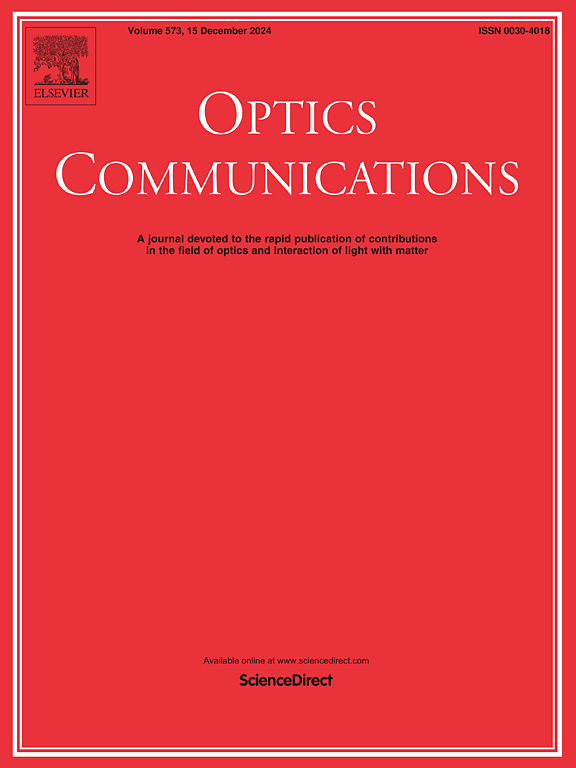Indoor visible light fingerprint positioning based on dynamic weighted RSSI and LGSHHO-LSSVM
IF 2.2
3区 物理与天体物理
Q2 OPTICS
引用次数: 0
Abstract
To address the issues of poor stability and low positioning accuracy in traditional indoor visible light fingerprint positioning methods based on received signal strength indicator (RSSI), this paper proposes an indoor visible light positioning method based on dynamically weighted RSSI signals and an improved harris hawk optimization (HHO) algorithm for least squares support vector machine (LSSVM) (abbreviation DW + LGSHHO-LSSVM algorithm). First, a dynamic weighting algorithm is introduced to process the RSSI signals, considering both the geometric distance between the receiver and the light source as well as the signal fluctuation, dynamically adjusting the weights to reduce noise interference and enhance the positioning features of the signal. Second, the logistic chaotic map is employed to improve population diversity, and a golden sine strategy is used to enhance the search efficiency of the HHO algorithm, thereby improving the global search ability and convergence accuracy of the algorithm. Finally, the improved HHO algorithm is used to optimize the key parameters of the LSSVM model, establishing a high-accuracy indoor positioning prediction model. Experimental results show that, in a 3 m × 4 m × 3 m test environment, the average positioning error of the DW + LGSHHO-LSSVM algorithm is 4.7 cm, with errors mainly concentrated in the range of 0.05–0.1 m. Compared to the LSSVM, HHO-LSSVM, DW + HHO-LSSVM, LGSHHO-LSSVM and MPA-LSSVM algorithms, the positioning accuracy is improved by 53.92 %, 48.35 %, 27.69 %, 38.96 % and 51.55 %, respectively. These results demonstrate the significant advantages of the proposed method in terms of positioning accuracy and stability.
求助全文
约1分钟内获得全文
求助全文
来源期刊

Optics Communications
物理-光学
CiteScore
5.10
自引率
8.30%
发文量
681
审稿时长
38 days
期刊介绍:
Optics Communications invites original and timely contributions containing new results in various fields of optics and photonics. The journal considers theoretical and experimental research in areas ranging from the fundamental properties of light to technological applications. Topics covered include classical and quantum optics, optical physics and light-matter interactions, lasers, imaging, guided-wave optics and optical information processing. Manuscripts should offer clear evidence of novelty and significance. Papers concentrating on mathematical and computational issues, with limited connection to optics, are not suitable for publication in the Journal. Similarly, small technical advances, or papers concerned only with engineering applications or issues of materials science fall outside the journal scope.
 求助内容:
求助内容: 应助结果提醒方式:
应助结果提醒方式:


